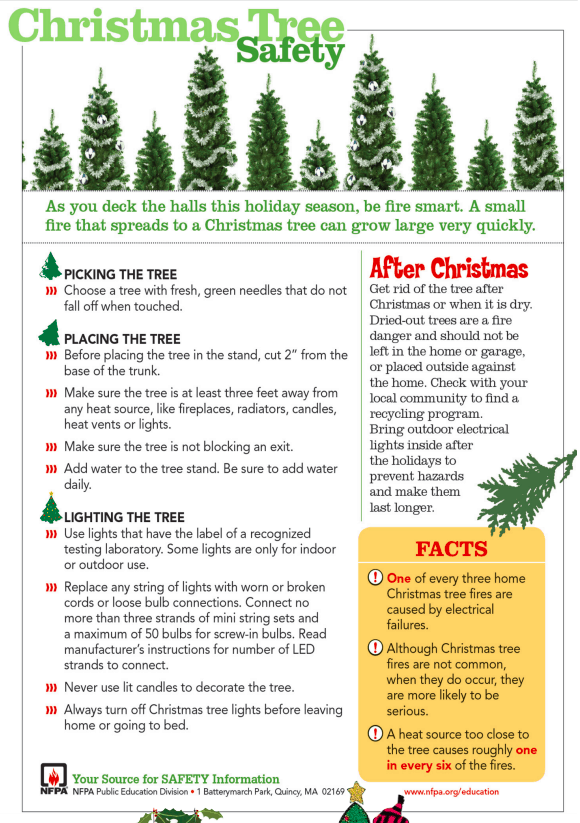Dear journalists/bloggers,
I understand that original data and statistics are necessary to back-up your statements.
While the National Fire Protection Association (NFPA) has sourced this data, it seems to be missing from their site.
Therefore, I've have spent weeks to scour the web, fact-check and recreate the original data.
Feel free to cite or update your data sources so that your audience can explore and access this data.
Feel free to cite or update your data sources so that your audience can explore and access this data.
0
+
U.S. fire department responded to an average 200+ home fires that started with Christmas trees per year between (2012-2016)
$
0
m+
Over $18 million in direct property damage annually
0
%
Home Christmas tree fires started in the living room, family room, or den.
0
One of every 45 reported home fires that began with a Christmas tree resulted in a death.
Although Christmas tree fires are not common, when they do occur, they are more likely to be serious. Carefully decorating your home can help make your holidays safer.
A live Christmas tree burn conducted by the U.S. Consumer Product Safety Commission (CPSC) shows just how quickly a dried-out Christmas tree fire burns, with flashover occurring in less than one minute, as compared to a well-watered tree, which burns at a much slower rate.
Christmas Tree Fire Safety Tips
Note: Click or tap the image to download the high-res version

1. Picking the tree
- Choose a tree with fresh, green needles that do not fall off when touched.
2. Placing the tree
- Before placing the tree in the stand, cut 2″ from the base of the trunk.
- Make sure the tree is at least three feet away from any heat source, like fireplaces, radiators, candles, heat vents or lights.
- Make sure the tree is not blocking an exit.
- Add water to the tree stand. Be sure to add water daily.
3. Lighting the tree
- Use lights that have the label of an independent testing laboratory. Some lights are only for indoor or outdoor use.
- Replace any string of lights with worn or broken cords or loose bulb connections. Read manufacturer’s instructions for a number of light strands to connect.
- Never use lit candles to decorate the tree.
- Always turn off Christmas tree lights before leaving home or going to bed.
4. After Christmas
- Get rid of the tree after Christmas. Dried-out trees are a fire danger and should not be left in the home or garage, or placed outside against the home. Check with your local community to find a recycling program. Bring outdoor electrical lights inside after the holidays to prevent hazards and make them last longer.
Research and Statistics
- Between 2012-2016, U.S. fire departments responded to an average of 170 home fires that started with Christmas trees per year. These fires caused an average of 4 deaths, 15 injuries, and $12 million in direct property damage annually.
- On average, one of every 45 reported home fires that began with a Christmas tree resulted in a death, compared to an average of one death per 139 total reported home fires.
- Electrical distribution or lighting equipment was involved in two of every five (43%) of home Christmas tree fires.
- In one-quarter (27%) of the Christmas tree fires and in 80% of the deaths, some type of heat sources, such as a candle or equipment, was too close to the tree.
- More than one-fifth (22%) of Christmas tree fires were intentional.
- Forty-two percent of reported home Christmas tree fires occurred in December and 33% were reported in January.
- Two of every five (40%) home Christmas tree fires started in the living room, family room, or den.
Source: NFPA’s “Home Structure Fires Involving Christmas Trees.”
Watch this NFPA video for help creating the holiday atmosphere you love, and the security of knowing you’re keeping yourself and your family and friends safer from fire.
Stay safe and happy holidays! 🎄
—
Warmest,
Ruth & Family.
